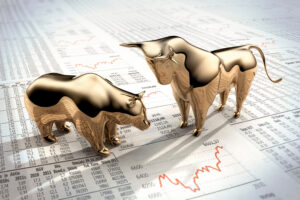When the world entered the throes of the sharp recession in the spring, we expected a sharp rebound followed by a gradual and choppy economic recovery. The initial recovery resembled a “V” pattern, but the path has since cooled and looks more irregularly higher. Two key factors have driven economic momentum: 1) massive monetary and fiscal stimulus from interest rate cuts, new Federal Reserve programs, unemployment assistance and benefits to individuals and businesses; and 2) a reopening of areas of the economy. At this point, both of these tailwinds are fading.
Absent a proven and widely available coronavirus vaccine, many individuals and businesses are reluctant to return to “normal,” even if lockdown restrictions are eased further. This will slow the economic recovery and could cause disappointments for those expecting a quicker return to pre-pandemic activity levels. As far as monetary policy, the Fed and other central banks are committed to retaining near-zero interest rates for years to come, but monetary policy cannot do much more absent a new emergency. Finally, the odds of a near-term deal on a new fiscal stimulus package are fading. Counter to earlier expectations, a deal before the November elections seems unlikely. We will almost certainly see some sort of additional stimulus after the election and or in 2021, but the delay is causing real pain to individuals and businesses who desperately need assistance.
To be clear, we have not turned more negative on prospects for economic growth. We always expected momentum to fade. But it appears that many investors expected a stronger recovery and priced in prospects of additional economic reopening as they banked on more fiscal stimulus. As such, many areas of the stock market started to look frothy over the summer and stocks were poised for a setback.
This is a key question and is more complicated than it might seem. On an absolute basis, valuation measures based on corporate earnings prospects (trailing, forward and cyclically adjusted) all suggest equities are expensive relative to their own history. Additionally, stocks also look expensive based on measures such as price-to-book, price-to-sales and total market capitalization relative to GDP. All of this implies that long-term returns for the broad market may be limited over the coming decade.
On a relative basis, however, stocks look more attractive when compared with cash and many areas of the bond market. With short-term rates pegged at zero, investors are essentially getting almost no returns on cash investments. And government bond yields remain at or close to historical lows (and remain below zero in some countries), making them even more expensive than stocks. This is the so-called TINA (there is no alternative) argument for stocks: It’s hard to make the case that stocks aren’t the better option when the dividend yield of S&P 500 is higher than long-term government bond yields.
Although stocks prices have declined since August, short-term risks still look somewhat elevated. Equities have not regained their footing since the market high on September 2, as economic reopening and hopes for fiscal stimulus have been fading. Additionally, uncertainty over the U.S. election has been rising even before we learned that the president tested positive for coronavirus. Many investors are worrying about (or indeed expecting) a protracted post-election battle over who actually won. Technical measures have also turned more mixed, as the selloff that started in the high-flying technology sector has spread to the broader market.
At this point, we counsel patience for investors. We think stocks are likely to remain in a sideways, choppy trading pattern through the end of the year. And it is very possible that stocks hit their high for the year when the S&P 500 Index reached 3,588 on September 2). We’re not expecting significant downside risks, but we think stocks need time to digest the gains earned since March and fundamentals need time to catch up. While we think near-term risk for stocks remain elevated, we also believe global equity prices will be higher one year from now. At least one vaccine candidate currently in Phase 3 trials is likely to prove viable and be widely available at some point by the first half of next year. And policymakers should eventually be able to enact additional fiscal stimulus. These factors should allow the economy to reaccelerate, and stocks typically do well when economic growth is climbing. Looking ahead, we think it is likely that corporate earnings will exceed their previous peak by the end of 2021 and the U.S. economy should reach a new GDP high in early 2022.
This leads to questions of investment positioning. Stock selectivity looks to be more critical than ever, given near-term pressures, the likelihood of diminished long-term returns and ongoing volatility. We have long been waiting for a rotation from U.S. to non-U.S. stocks, but that leadership transition remains elusive. That shift would require the sort of synchronized, robust acceleration in global growth similar to what occurred after the global financial crisis. Chinese growth has been improving, but we need a broader global economic reopening, which probably requires a coronavirus vaccine.
For now, we will take advantage of any weaknesses in the market to add to both the economically sensitive portions of our portfolio, which will benefit from a global recovery and technology where growth will sustain well above the real economy. It does not hurt that the Fed has our backs, and there are trillions of dollars sitting on the sidelines waiting to invest. We also like industrial commodities as we see a major global manufacturing cycle as inventories are at multi-year lows. We will continue to focus on the larger, well capitalized companies that will continue to gain significant market shares against their smaller competitors.








